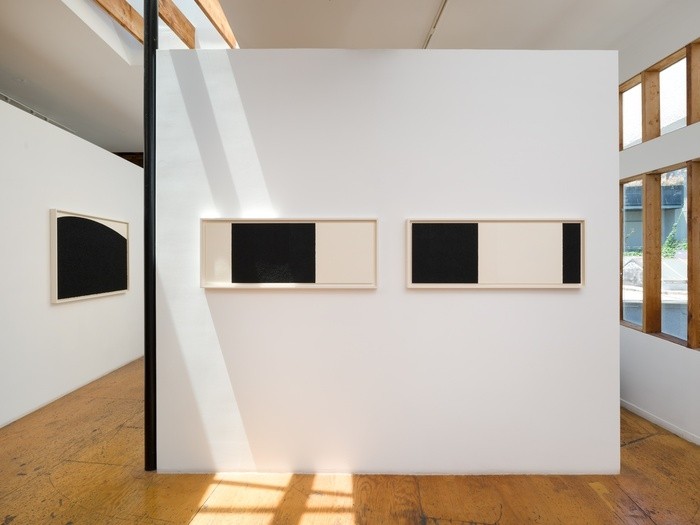
Isamu Noguchi: Selected sculptures & Richard Serra: Hitchcock series
Created and published at Gemini G.E.L. between 1982 and 1983, these sculptures represent a significant late body of work by Noguchi, blending industrial materials with organic forms to create stunning, thought-provoking pieces.
Noguchi’s sculptures in this exhibition reflect a profound synthesis of nature, land and space, evoking images of cactus, clouds, and mountains. Each piece is a testament to Noguchi’s vision of metamorphosis, capturing forms in transition—from chrysalis to butterfly, from rock to abstract shape. This series of sculptures exemplifies Noguchi’s unique ability to transform and elevate everyday industrial materials into organic forms.
The creation of Noguchi’s sculptures is a complex process that results in their captivating form and surface. For the Gemini series, Noguchi began with meticulous designs on graph paper, translating these into scale maquettes made of cardboard. He then moved to foam-core models before finally having the shapes cut out of sheet steel using a plasma torch, a tool typically reserved for heavy equipment and hard metals. During the galvanizing process, the sculptures are dipped in boiling zinc, emerging with unique, textured surfaces. This method gives each piece its distinct pattern and character, embodying Noguchi’s meticulous attention to angle, texture, and space.
Noguchi’s career spanned multiple disciplines, including sculpture, landscape, architecture, furniture and lighting design, and ceramics. His contributions have left an undeniable mark on 20th-century art and design, inspiring contemporary artists, designers, and architects with his interdisciplinary approach and organic forms. His legacy is characterized by a blend of Eastern and Western influences, creating art that integrates seamlessly into everyday life and transcends cultural boundaries.
Isamu Noguchi, born in Los Angeles in 1904 to an American mother and the Japanese poet Yone Noguchi, spent his early years in Japan and later returned to the US. After studying sculpture at the Leonardo da Vinci School in New York, Noguchi received a Guggenheim Foundation fellowship and went to Paris, where he worked as Constantin Brancusi’s studio assistant and learned respect for craftsmanship and materials. Noguchi’s diverse career included stone carving, sheet metal abstractions, large-scale murals, and bronze reliefs. In addition to sculpture, Noguchi designed and executed many gardens and playgrounds in the United States and abroad, including his highly regarded “California Scenario” located in nearby Costa Mesa, California. Noguchi also created furniture and interior designs, most notably his iconic Akari lamps, and was involved with theater and ballet, creating abstract stage designs for Merce Cunningham, Martha Graham, and George Ballanchine. Later in his career, Noguchi traveled extensively to New York, Japan, and Italy and maintained a studio in Long Island City. Among his exhibitions are those organized by the Rochester Memorial Art Gallery (1931); Kamakura Modern Museum (1952); the Museum of Modern Art, New York (1967); the Whitney Museum of American Art, New York (1968); and the Walker Art Center, Minneapolis (1978). In 1985, the Noguchi Museum opened in Long Island City, New York, which continues to celebrate his legacy. He passed away on December 30, 1988.